

16' High
| Click here for the introduction on high crosses and other images of high crosses. Click here to see details of the west side of the Muiredach Cross. Click here to see details of the east side of the Muiredach Cross. | |
THE SOUTH SIDE | |
 |
The South sideNarrative scenes occur on the side only in two places--the gable end of the house cap (top) with the Entry into Jerusalem and in a panel at the end of the arm with Pilate Washing his Hands. The other panels have decorative abstract motifs. |
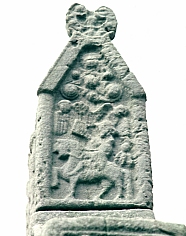 |
Entry into JerusalemThe top of the cross looks like a small house or shrine with its own gabled roof. Here the first scene of Christ's Passion is depicted. As He enters Jerusalem on a horse, not an ass, angels look down on Him. The angle of the gable has decorative spiral bosses. |
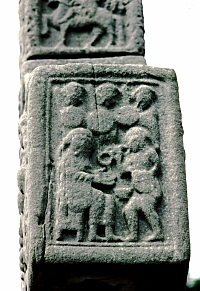 |
Pilate Washes his HandsThe end of the cross arm has a panel depicting Pilate seated on a high-backed chair while his servant pours water over his hands. Soldiers with shields stand in the background. |
Interlace motifs and portrait headsInterlace motifs under the ring arc border three portrait heads framed by two snakes coiled to form a guilloche or cable pattern. The human heads have round faces with expressive eyes. The snakes have scales, ears, and fish tails. (See below--on the north side--where the hand of God extends from this design.) | |
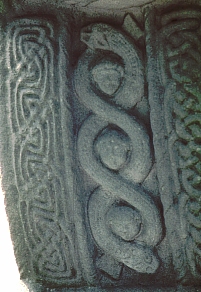 |
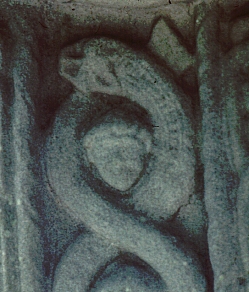 |
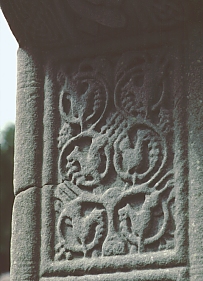 |
The inhabited vineChristian artists adopted this pagan motif--the sinuous vine with birds and animals among its twisting curves. Originally associated with Bacchus, the classical god of wine, the vine became associated with Christ ("I am the real vine. . . ." [John 15:1-17]) and the Eucharist. |
Interlace pattern with eight men | |
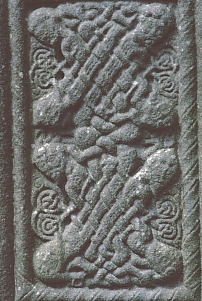 |
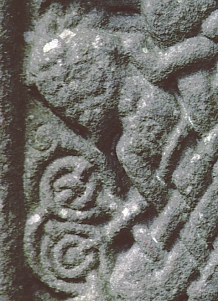 |
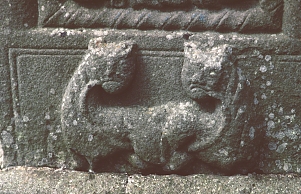 |
Lowest part of the shaftTwo monsters in high relief have semi-human faces. Their bodies are crossed but each has short front legs. |
THE NORTH SIDE | |
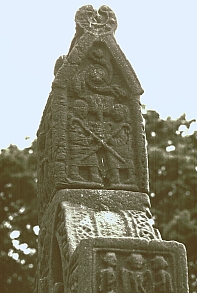 |
St. Paul and St. Anthony in the DesertThe gable end of the house cap depicts the two saints holding two staves crosswise. A large raven flies downward with a circular loaf of bread. A chalice is on the ground between the two saints. Although this event does not occur in the Bible, it was popular in medieval art because of its Eucharistic significance. |
 |
The Hand of GodUnder the cross arm the hand of God surrounded by a "glory" is depicted. The hand is symbolic of the mighty power of God. Portrait heads, like those on the south side, are under the ring. |
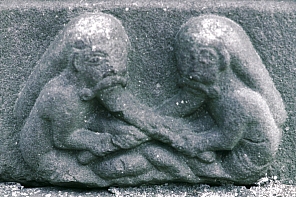 |
The lowest part of the shaftTwo long-haired men seated opposite each other tug at the other's long beard. Is this intended for humor? |
Click here to see details of the west side of the Muiredach Cross.
Click here to see details of the east side of the Muiredach Cross.
![]() Click here to return to places index.
Click here to return to places index.
![]() Click here to return to index of artists and architects.
Click here to return to index of artists and architects.
![]() Click here to return to chronological index.
Click here to return to chronological index.
![]()